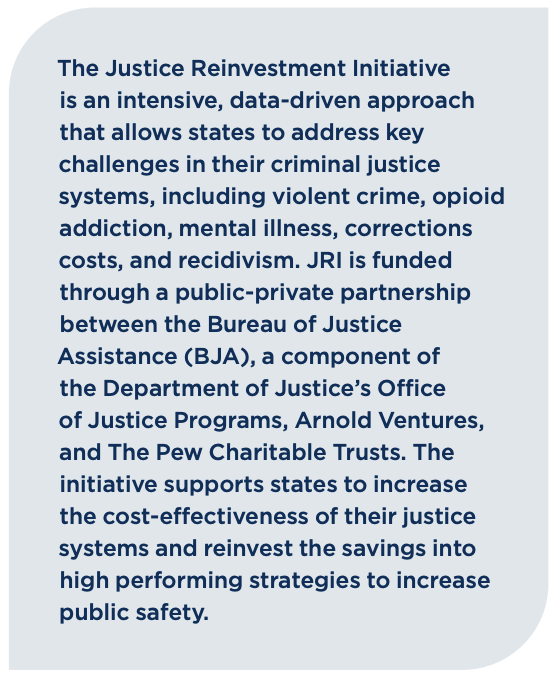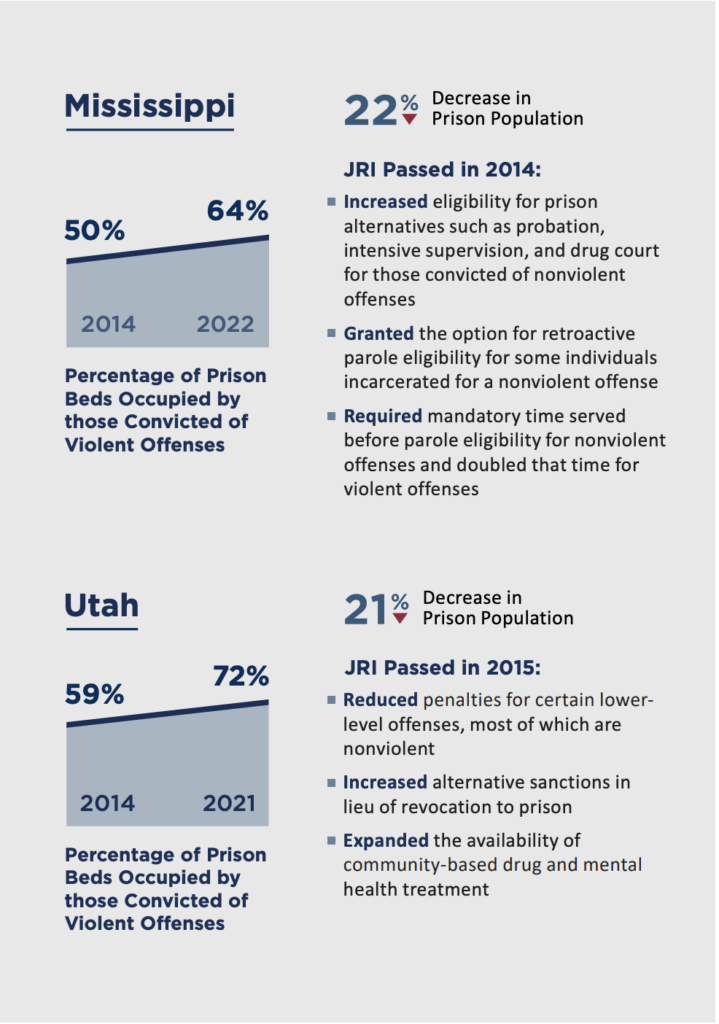Justice Reinvestment Initiative: Prioritizing Prison Resources Where They Matter Most

The Justice Reinvestment Initiative (JRI) is a partnership with state leaders from all three branches of government committed to using their criminal justice data to examine and improve their systems by implementing proven, innovative, and comprehensive approaches to reduce crime, cut recidivism rates, and shift resources toward more effective public safety strategies.
A central goal for states engaging in JRI is to focus prison space on those who have committed serious, violent, or repeat offenses, freeing up resources to invest in more effective recidivism -reduction strategies.


Achieving the Goal
A key indicator of progress toward prioritizing prison resources where they matter is the increase in the proportion of a state’s prison population comprised of people convicted of violent offenses versus nonviolent offenses.
Four states that received technical assistance from the Crime and Justice Institute (CJI), with funding from BJA, enacted policies to achieve this goal.
The main strategies to shift the composition of the states’ prison populations include:
- Creating tiered penalties to address violent conduct based on severity
- Focusing recidivism reduction resources on those most likely to reofend
- Prioritizing incentives to encourage completion of treatment, employment, and education programs
- Expanding parole eligibility for those convicted of nonviolent ofenses

Contact
For more information or additional state data, contact Barbara Pierce, Director of Justice Initiatives, or visit cjinstitute.org
Barbara Pierce
Director of Justice Initiatives
bpierce@cjinstitute.org | 207-400-7594
Crime and Justice Institute
355 Boylston Street, Boston, MA 02116
617-482-2520 | @CJIatCRJ
This project was supported by Grant No. 2019-ZB-BX-K003 awarded by the Bureau of Justice Assistance. The Bureau of Justice Assistance is a component of the Department of Justice’s Office of Justice Programs, which also includes the Bureau of Justice Statistics, the National Institute of Justice, the Office of Juvenile Justice and Delinquency Prevention, the Office for Victims of Crime, and the SMART Office. Points of view or opinions in this document are those of the author and do not necessarily represent the official position or policies of the U.S. Department of Justice.
Sources: All data from annual reports from state departments of corrections and the Bureau of Justice Statistics Prisoners series.

Justice Reinvestment Initiative:
Prioritizing Prison Resources Where They Matter Most
